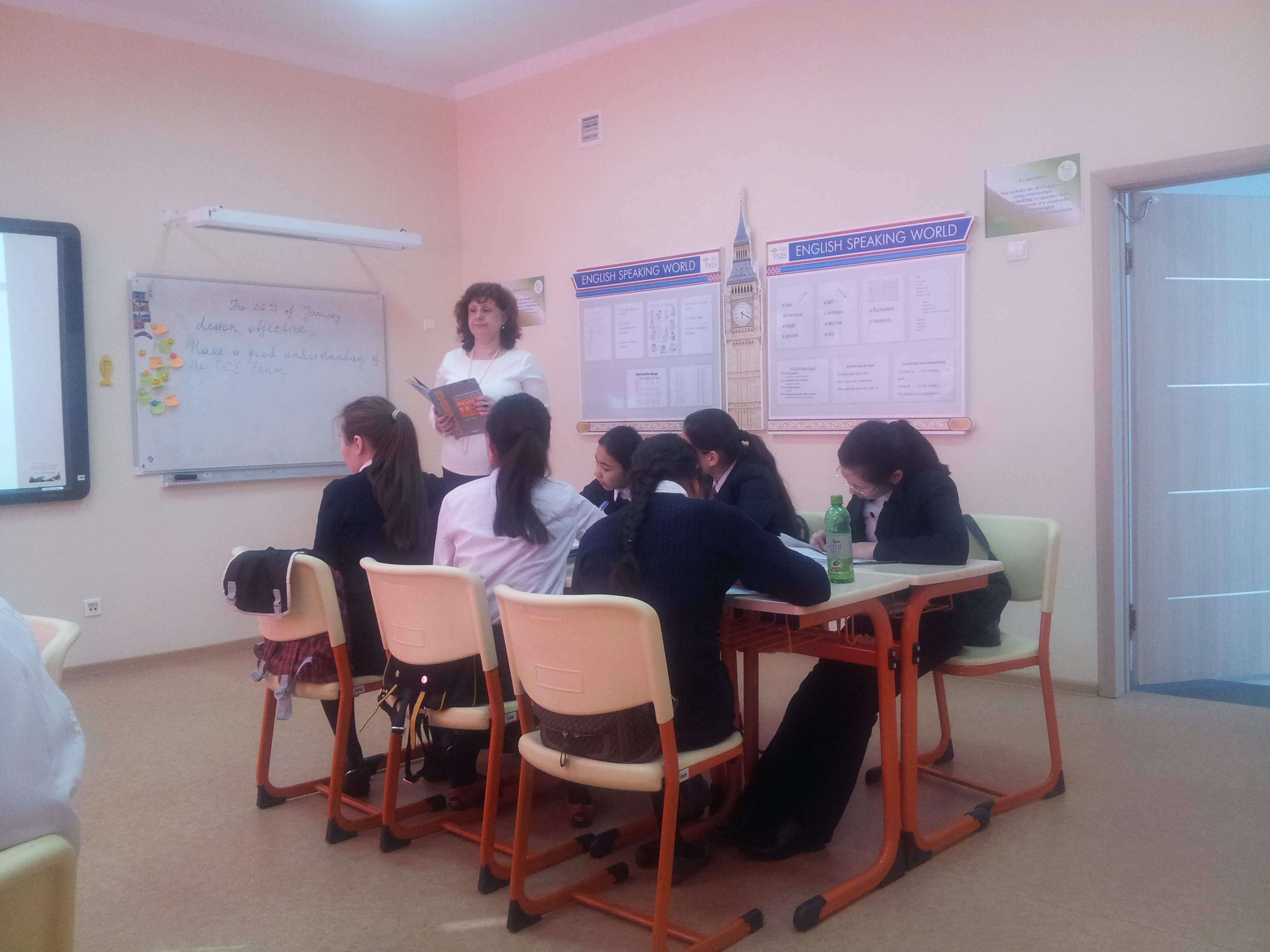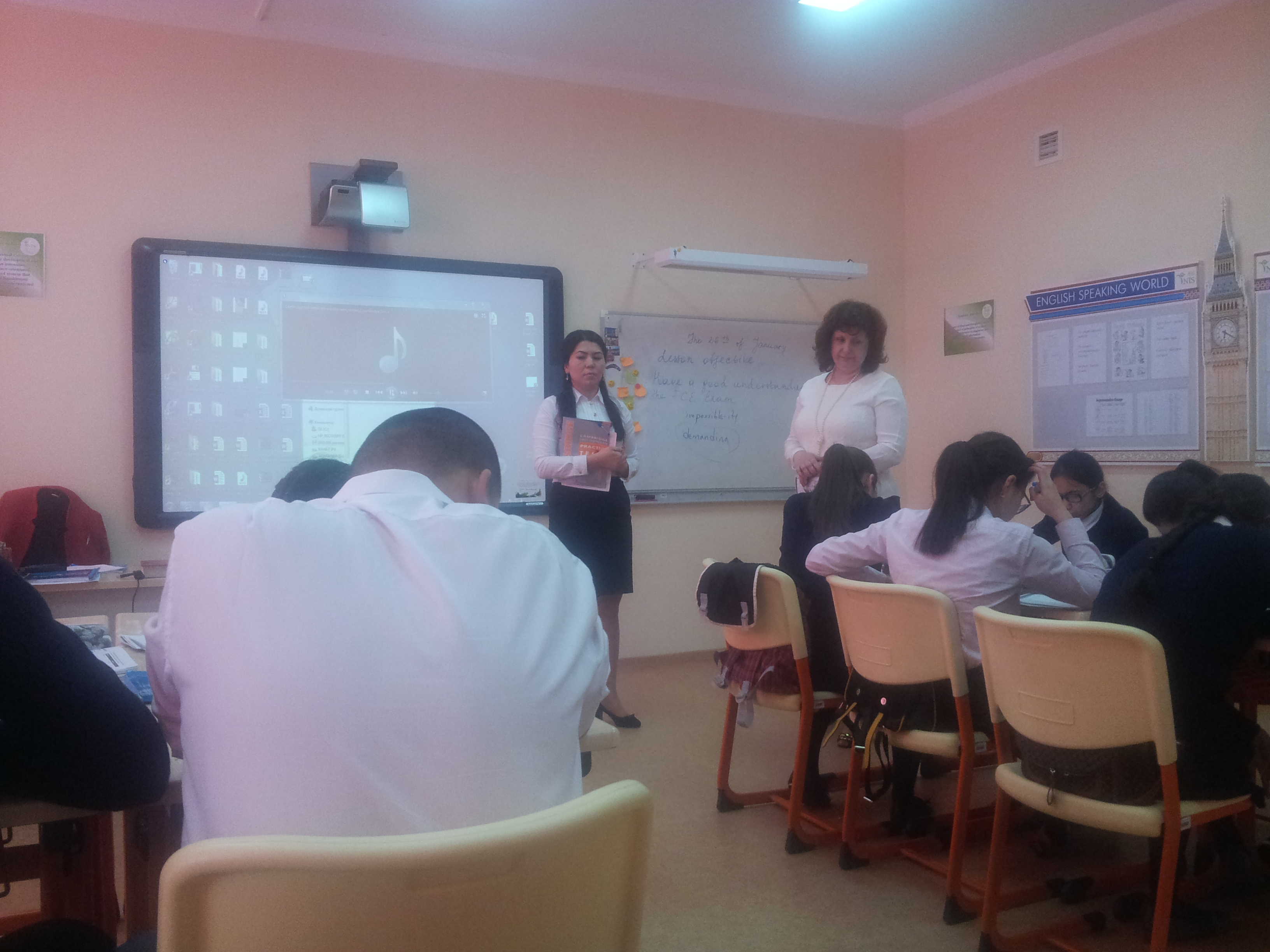| « April 2015 » | ||||||
| Su | Mo | Tu | We | Th | Fr | Sa |
| 1 | 2 | 3 | 4 | |||
| 5 | 6 | 7 | 8 | 9 | 10 | 11 |
| 12 | 13 | 14 | 15 | 16 | 17 | 18 |
| 19 | 20 | 21 | 22 | 23 | 24 | 25 |
| 26 | 27 | 28 | 29 | 30 | ||
08:18 My First Experience with Collaborative Team Teaching (by Christine Lytras) | |
Having been an English teacher for 25 years, I believed I had done and seen it all. How wrong I was! Although I knew that I would be team teaching at NIS, as I had been asked about my previous experience during my skype interview, I really didn’t know what or how much of it to expect. My feelings when I learned that I was going to be co-teaching each and every lesson with a local teacher varied from apprehension to a stoic optimism that I could handle it, since I’ve handled so many other difficult situations in my career. There are many forms of what is termed team teaching. The two that I was familiar with from the US involved a special education teacher sitting beside a student or students in the classroom while the lesson is in progress in order to provide assistance. Another method is the “pull-out” method, when an area specialist remediates a small group of struggling students while the majority of the class is simultaneously working with their classroom teacher. I was totally unprepared as to the type of co-teaching that I was to encounter at NIS. During my first week of teaching, I felt as though I was being restrained from doing what I do best: teaching MY class in MY room, MY own way. It seems to me now that we teachers have been infused with a culture of self-centered authoritativeness that we treasure and that allows us to feel that we are “in control”. The possibility of gain resulting from partial surrender of control never would have occurred to me, had I not team taught in Kazakhstan. There are many rewards, I assure you.
One of the most important rewards is the exchange of ideas. For me, communication between colleagues is always the most pleasant and effective road to learning from a peer’s experience; whether it is ideas, techniques, teaching styles or use of technology. Through co-planning and feedback I have become more reflective and gained valuable insight into another culture’s view of education. Finally, two heads and two bodies working in unison have proven to be better than one. In terms of classroom management, it is common knowledge that students respond better when their native language is used to give complicated directions, explain sophisticated terminology or manage a challenging situation. Two teachers in the classroom means individualized attention may be given where necessary and better supervision in a test- taking situations. Additionally, four hands are better than two when it comes to the distribution of handouts or in an emergency situation where something was forgotten in another room or in case plan B implementation is necessary. Last but not least, a second head can come in very useful when a judgment call needs to be made, a reference needs to be looked up or a second opinion is required. From a more human perspective, co-teaching brings people together. I have developed close professional relationships with my co-teachers to the extent where trust has been built and it is possible to share and correct each other if necessary without insecurities taking over. I’ve developed working relationships built on equality, trust, openness, willingness, helpfulness, and equally importantly I’ve made lasting friendships. Who would imagine? Certainly not me! From all the reasons listed above, it is clear that team teaching has a lot to offer a facilitator who is secure enough in their teaching to take a risk and try it. | |
|
| |
| Total comments: 0 | |

